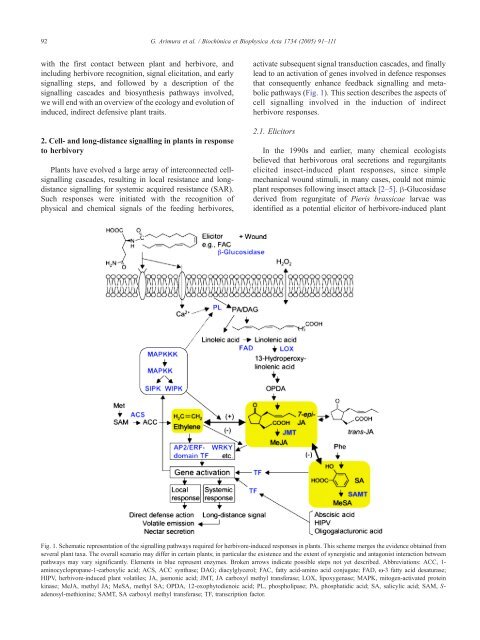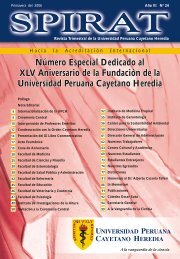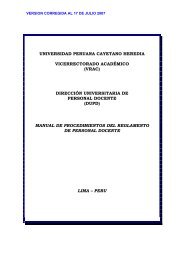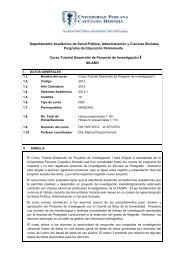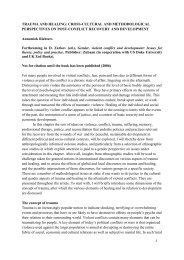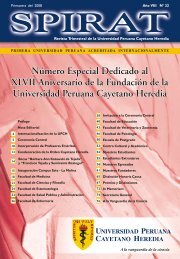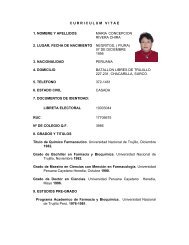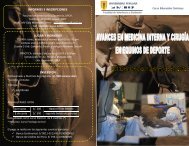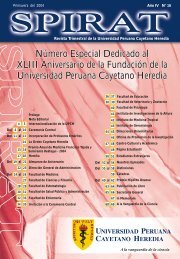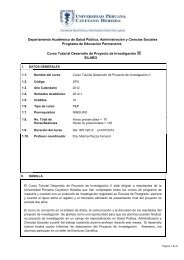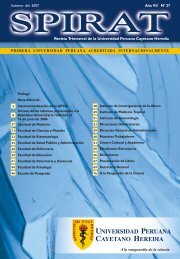92G. Arimura et al. / Biochimica et Biophysica Acta 1734 (2005) 91–111with the first contact between <strong>plant</strong> and herbivore, andincluding herbivore recognition, signal elicitation, and earlysignalling steps, and followed by a description of thesignalling cascades and biosynthesis pathways involved,we will end with an overview of the ecology and evolution of<strong>induced</strong>, <strong>indirect</strong> defensive <strong>plant</strong> traits.2. Cell- and long-distance signalling in <strong>plant</strong>s in responseto herbivoryPlants have evolved a large array of interconnected cellsignallingcascades, resulting in local resistance and longdistancesignalling for systemic acquired resistance (SAR).Such responses were initiated with the recognition ofphysical and chemical signals of the feeding herbivores,activate subsequent signal transduction cascades, and finallylead to an activation of genes involved in defence responsesthat consequently enhance feedback signalling and metabolicpathways (Fig. 1). This section describes the aspects ofcell signalling involved in the induction of <strong>indirect</strong>herbivore responses.2.1. ElicitorsIn the 1990s and earlier, many chemical ecologistsbelieved that herbivorous oral secretions and regurgitantselicited insect-<strong>induced</strong> <strong>plant</strong> responses, since simplemechanical wound stimuli, in many cases, could not mimic<strong>plant</strong> responses following insect attack [2–5]. h-Glucosidasederived from regurgitate of Pieris brassicae larvae wasidentified as a potential elicitor of herbivore-<strong>induced</strong> <strong>plant</strong>Fig. 1. Schematic representation of the signalling pathways required for herbivore-<strong>induced</strong> responses in <strong>plant</strong>s. This scheme merges the evidence obtained fromseveral <strong>plant</strong> taxa. The overall scenario may differ in certain <strong>plant</strong>s; in particular the existence and the extent of synergistic and antagonist interaction betweenpathways may vary significantly. Elements in blue represent enzymes. Broken arrows indicate possible steps not yet described. Abbreviations: ACC, 1-aminocyclopropane-1-carboxylic acid; ACS, ACC synthase; DAG; diacylglycerol; FAC, fatty acid-amino acid conjugate; FAD, N-3 fatty acid desaturase;HIPV, herbivore-<strong>induced</strong> <strong>plant</strong> volatiles; JA, jasmonic acid; JMT, JA carboxyl methyl transferase; LOX, lipoxygenase; MAPK, mitogen-activated proteinkinase; MeJA, methyl JA; MeSA, methyl SA; OPDA, 12-oxophytodienoic acid; PL, phospholipase; PA, phosphatidic acid; SA, salicylic acid; SAM, S-adenosyl-methionine; SAMT, SA carboxyl methyl transferase; TF, transcription factor.
G. Arimura et al. / Biochimica et Biophysica Acta 1734 (2005) 91–111 93volatiles (HIPVs) [6]. The application of this h-glucosidaseto mechanically wounded parts of cabbage leaves resulted inthe emission of a volatile blend that attracted parasitic wasps(Cotesia glomerata). On the other hand, the application ofglucose oxidase, a salivary gland enzyme, inhibited thesynthesis of nicotine in tobacco leaves and may thus beresponsible for the observed resistance of feeding herbivores[7]. The suppressive effect, which maintains the <strong>plant</strong>palatable, may be due to the products of glucose oxidase,namely hydrogen peroxide (H 2 O 2 ) and gluconic acid.N-(17-hydroxylinolenoyl)-l-glutamine (volicitin), a fattyacid-amino acid conjugate (FAC), was detected in the oralsecretion of beet armyworm larvae (Spodoptera exigua) [8](Fig. 2). This FAC was identified as the main elicitorinducing the emission of a volatile blend in maize <strong>plant</strong>s(Zea mays) similar to that emitted when caterpillars fed onthem. While volicitin was isolated from S. exigua, otherFACs with biological activity, such as N-acyl Gln/Glu, havebeen isolated from the regurgitate of several lepidopteranspecies [9–11]. For example, the FAC N-linolenoyl-Glu inthe regurgitate of the tobacco hornworm (Manduca sexta)was characterised as a potential elicitor of volatile emissionin tobacco <strong>plant</strong>s. FACs can induce the accumulation of 7-epi-jasmonic acid (JA) an octadecanoid-derived phytohormonethat elicited transcripts of herbivore-responsive genesin the tobacco <strong>plant</strong>s [9]. 7-Epi-jasmonic acid is theoriginally produced and biologically active form of JA,which is isomerised in <strong>plant</strong>a to the less active trans-isomer(see Fig. 1). Recently, a plasma membrane protein frommaize was suggested as a volicitin-binding protein [12].Plants that have been either pre-treated with methyljasmonate (MeJA) or S. exigua feeding showed increasedbinding activity of labelled volicitin to the plasma membrane.These findings suggest that volicitin-<strong>induced</strong> JAenhanced the interactions of the plasma membrane proteinwith volicitin as a ligand or the <strong>induced</strong> formation of theproteins after the recognition of volicitin. However, volicitinis not generally active. Leaves of Lima bean (Phaseoluslunatus), for example, do not respond to volicitin or to otherFACs with the induction of volatile emission [13].2.2. Early and secondary signal transduction pathwaysAfter mechanical damage, reactive oxygen species weregenerated near cell walls of tomato vascular bundle cells andthe resulting H 2 O 2 was shown to act as a second messengerfor the activation of defensive genes in mesophyll cellswhich are expressed later [14]. In Lima bean leaves infestedwith Spodoptera littoralis larvae, a depolarization of themembrane potential (V m ) and intracellular calcium influxwere observed only at the site of damage [15]. Simplemechanical wounding of the leaves also caused V mdepolarization, yet without a concomitant influx of calcium.Hence, already at this early step of signal recognition andtransduction, the pathways offer different responses towounding and herbivore attack. Thus, both wounding andthe introduction of herbivore-specific elicitors appear to beessential for the full induction of defence responses.On the other hand, recent studies applying a continuousrather than a single instance of mechanical damage (patternwheel) to Lima bean leaves clearly resulted in the emissionof volatile blends resembling those that occur afterherbivore damage [16]. As mentioned above, Lima beanand cotton (Gossypium hirsutum) do not respond to FACswith increased volatile emissions [13]. This observationmay be consistent with a high internal threshold forFig. 2. N-acyl glutamines from oral secretions of lepidopteran larvae.


